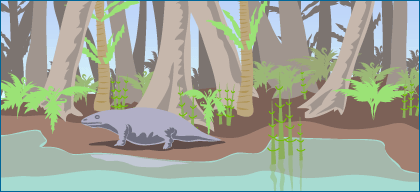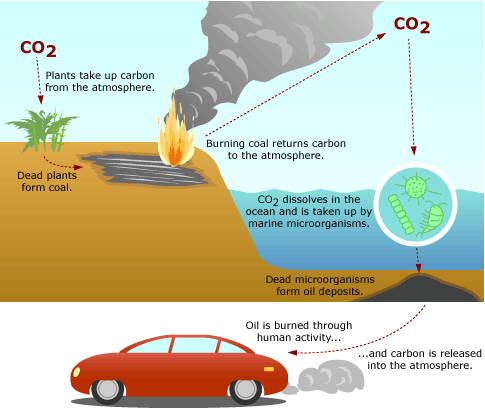Jennifer’s research highlights how carbon atoms move through living things, the atmosphere, and the Earth over tremendously long periods of time. Carbon can exist in many different forms: as part of a carbon dioxide molecule, as coal, or as part of the body of a living organism, for example. Different events can convert carbon atoms from one form to another.

As an example of how this works, let’s jump 300 million years back in time to the Carboniferous period…
- At this time, many areas of the Earth were warm and swampy, with lush vegetation. These plants sucked up carbon dioxide from the atmosphere and used the carbon to grow.

- When those plants died, they took the carbon with them. Over millions of years, those deposits of dead plants (and the carbon within them) became beds of coal.
- One hundred and twenty million years later, Gondwana broke up and molten rock oozed into the coal beds, setting them on fire. As the coal beds burned, they released their carbon (in the form of carbon dioxide) back into the atmosphere.
- Some of this carbon dioxide dissolved into the oceans, where it was taken up by marine microorganisms. When these died, they (and the carbon within them) formed an organic layer on the ocean floor. Eventually, this organic layer became vast oil deposits.
And so on…

Though it may seem removed from our everyday lives, this cycle continues today — but now it must additionally cope with the impact of human activities. As we burn this oil and other fossil fuels in ours cars and homes, we release carbon molecules into the atmosphere that have been locked up in other forms for hundreds of millions of years.
Learn more about the carbon cycle on the Understanding Global Change site.
